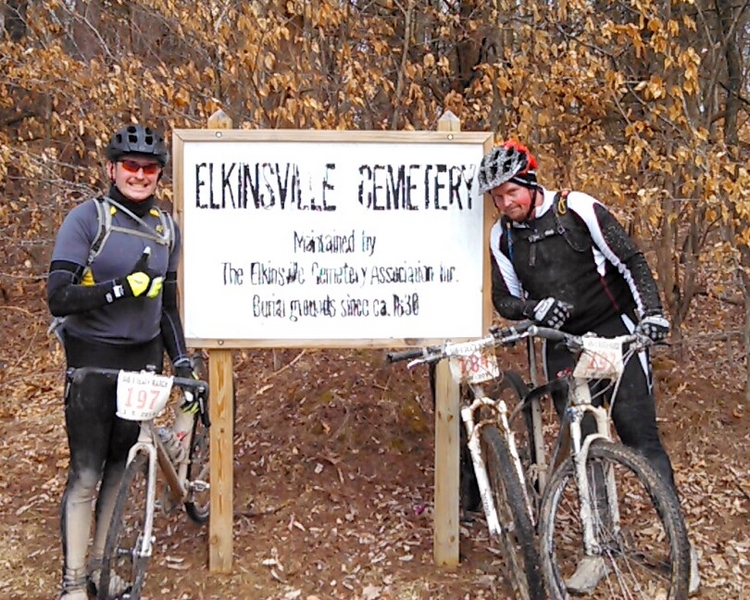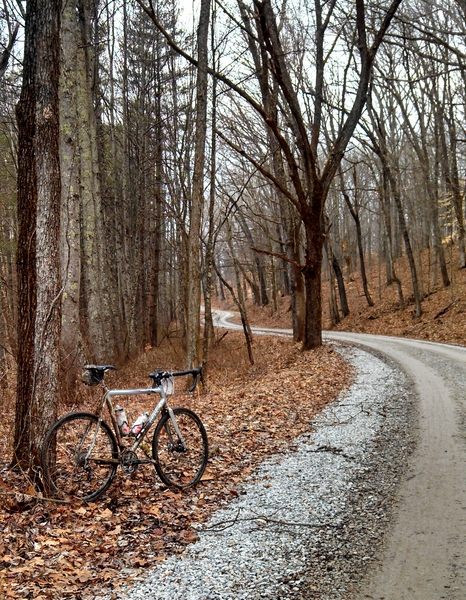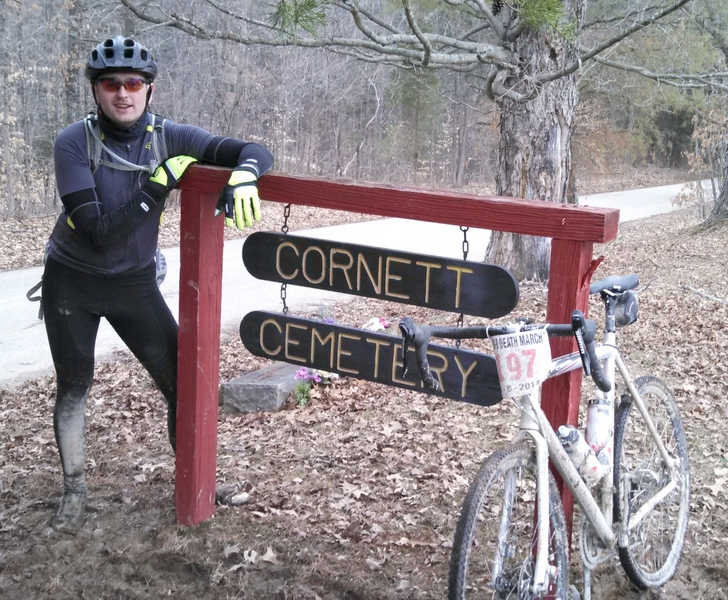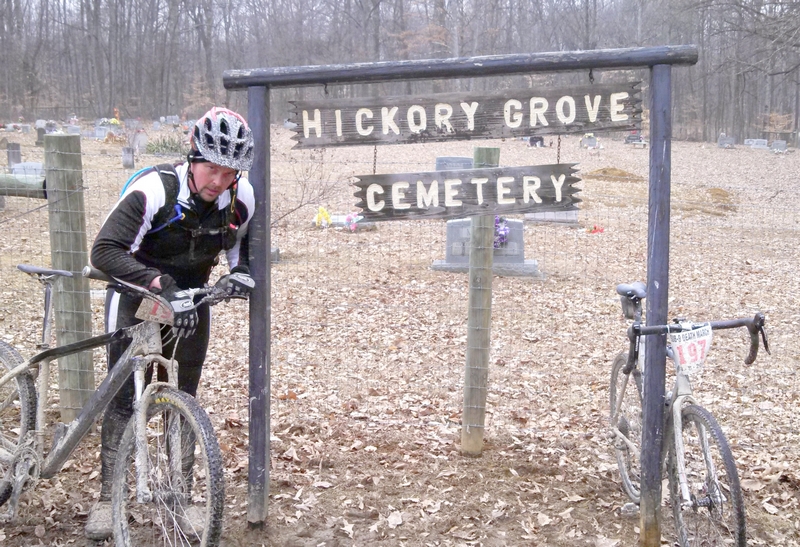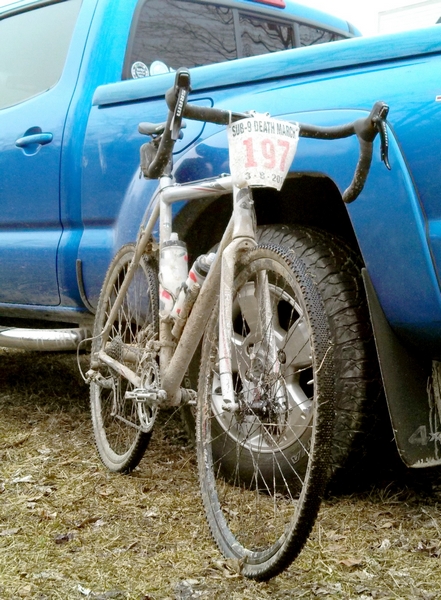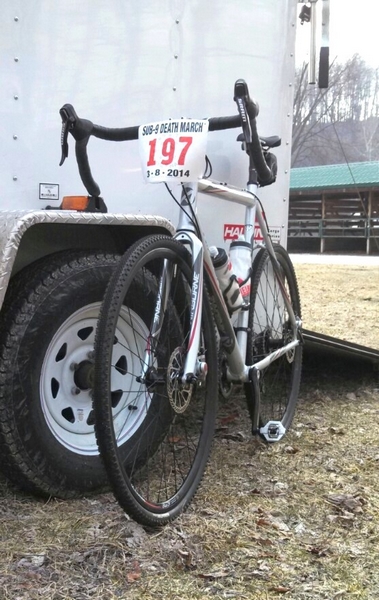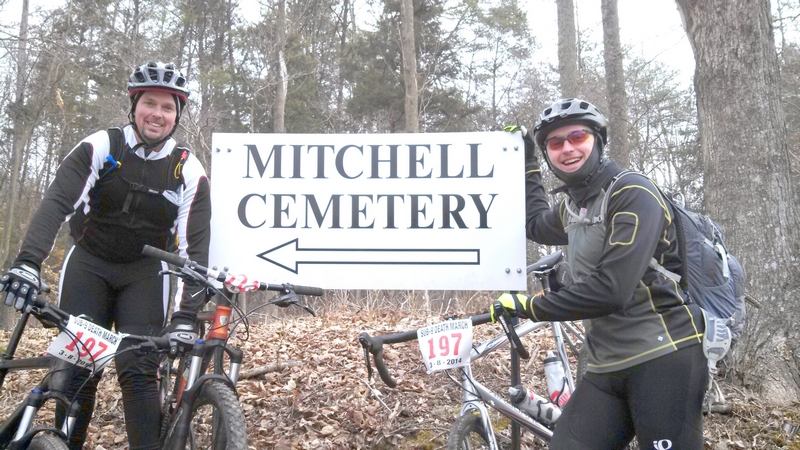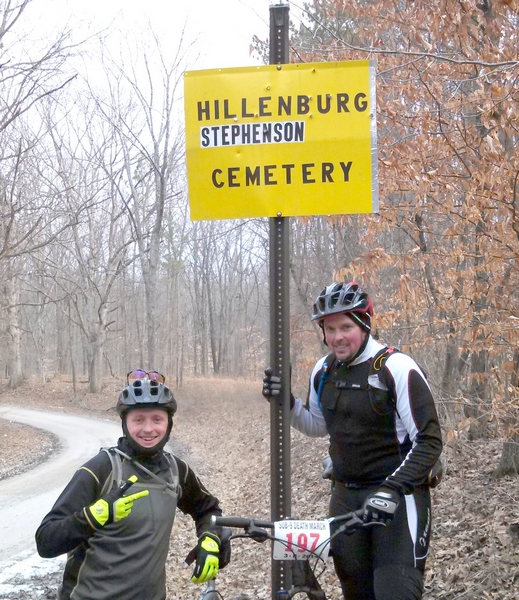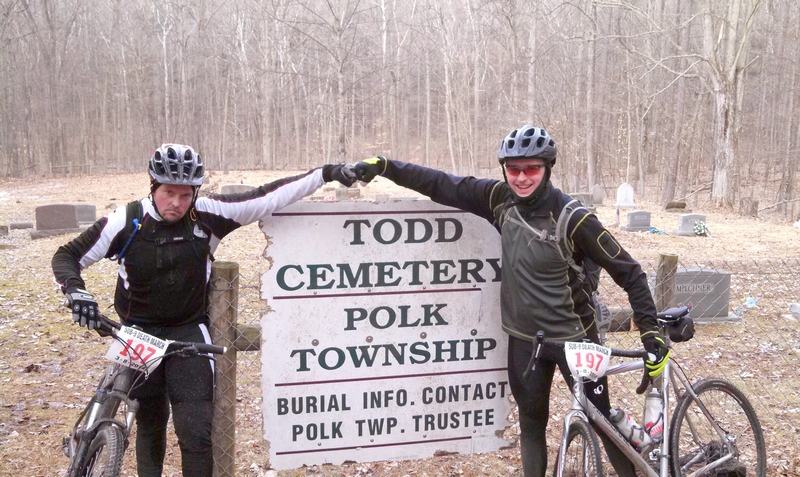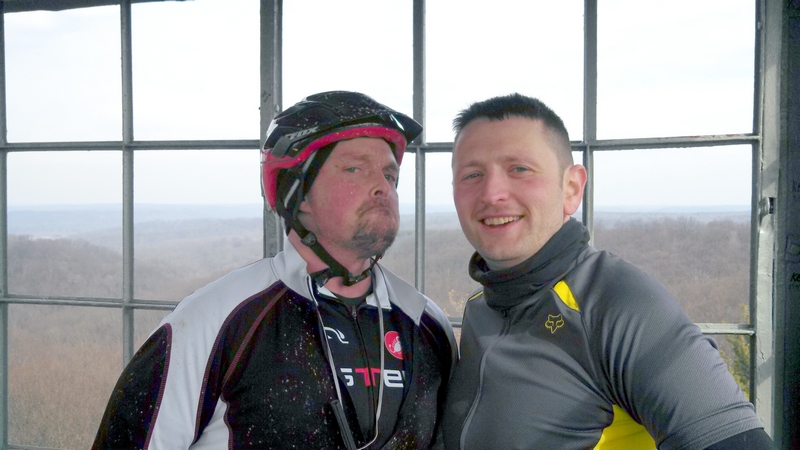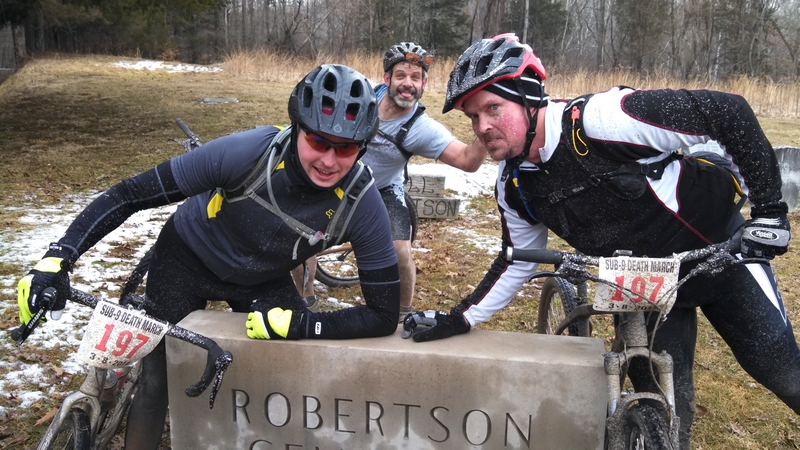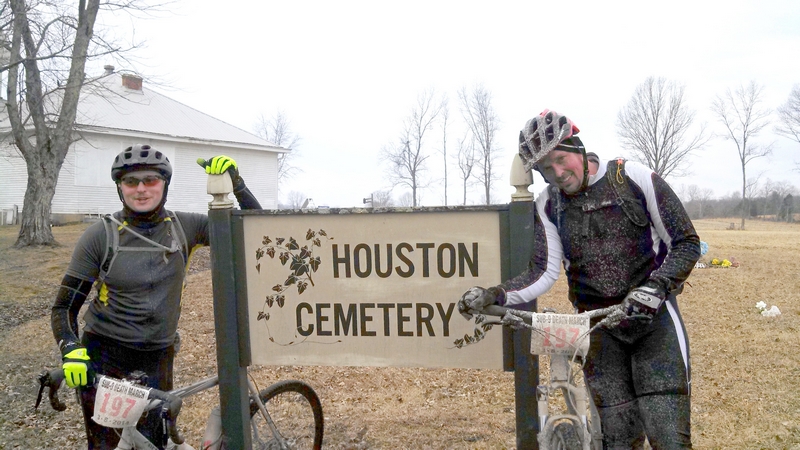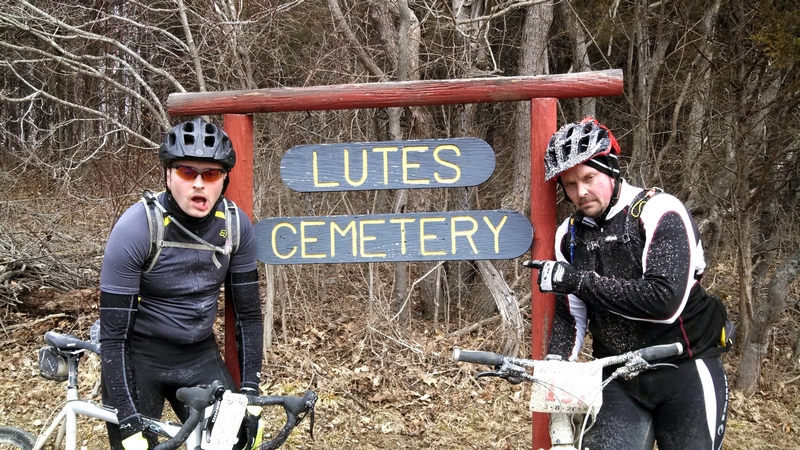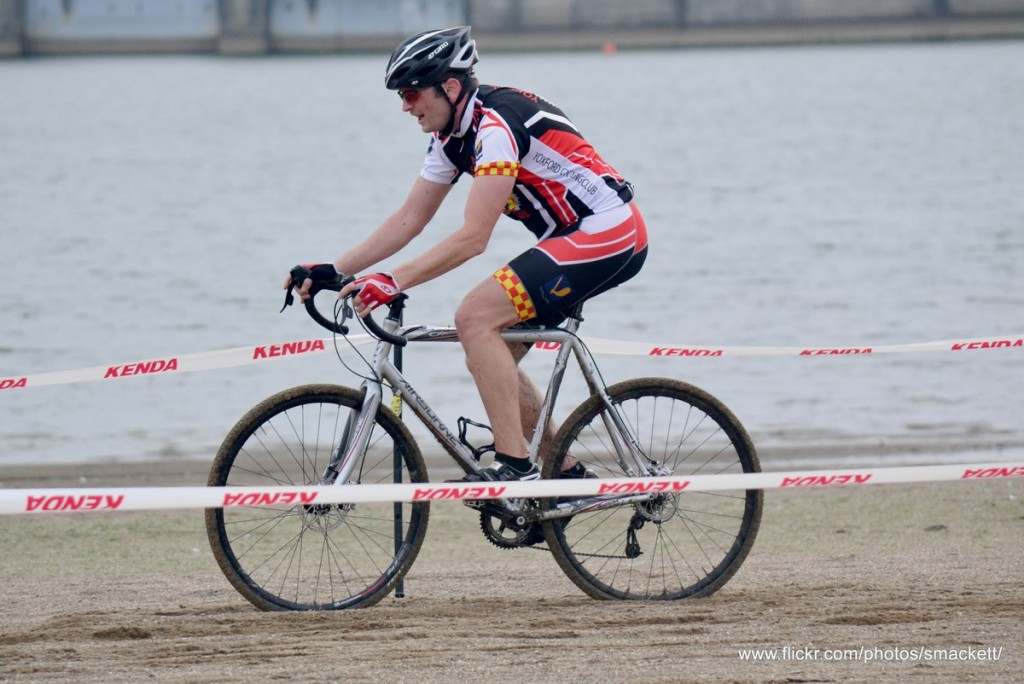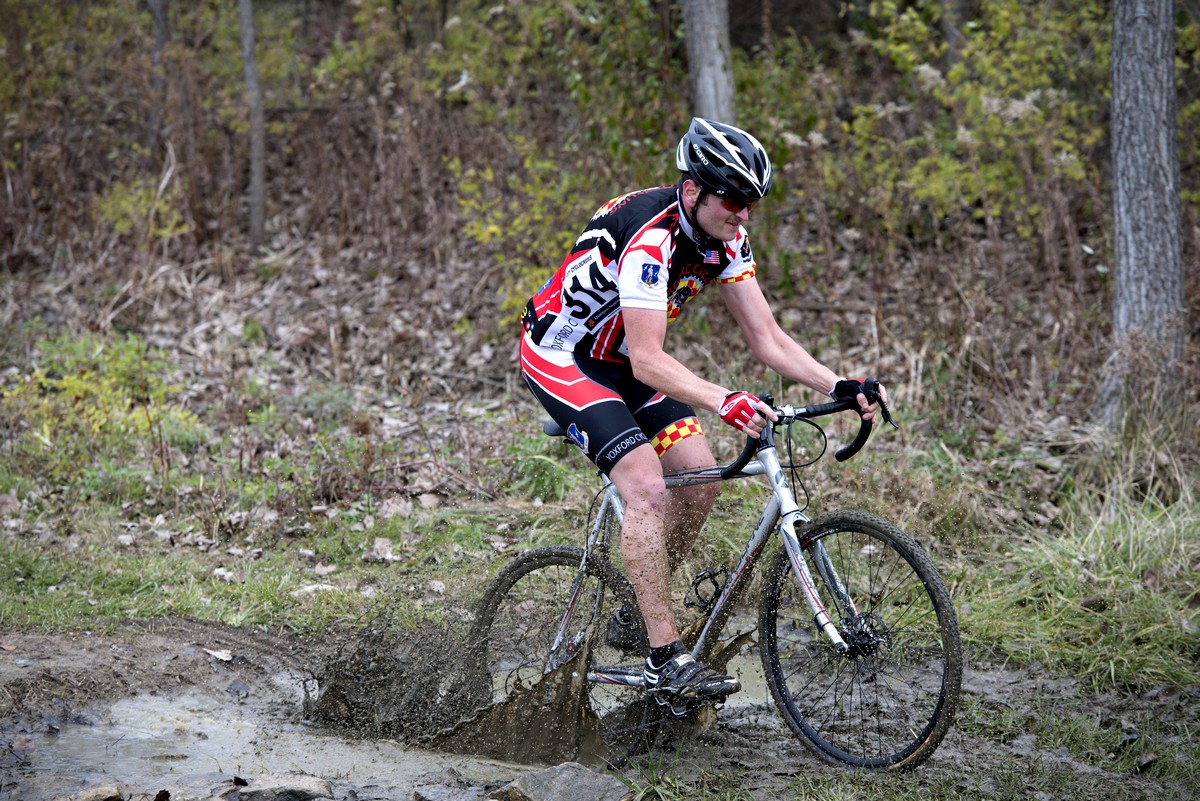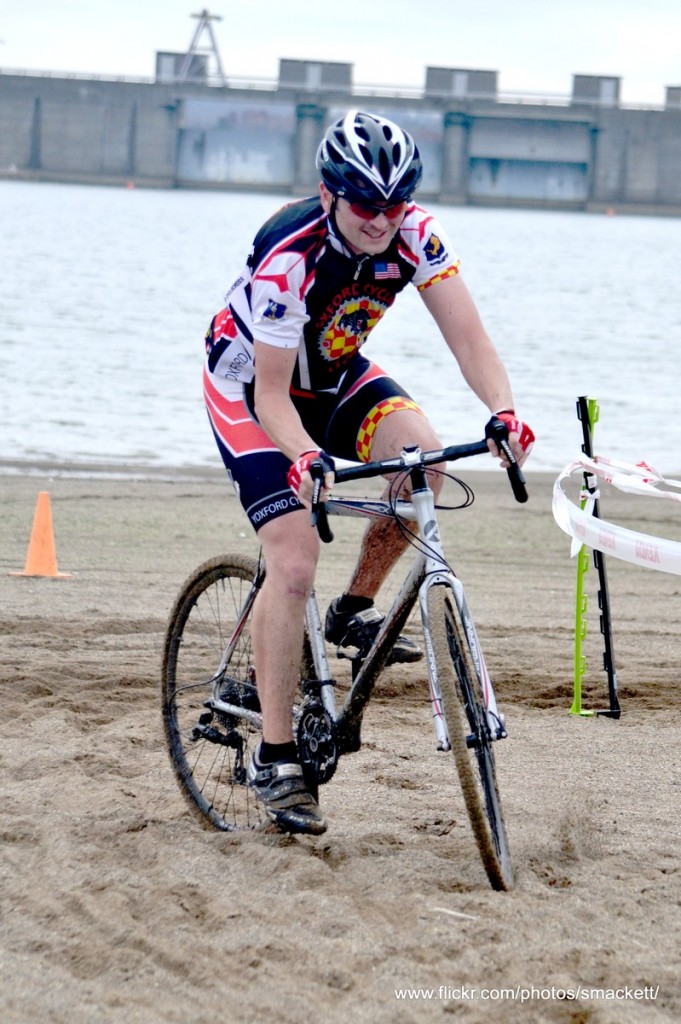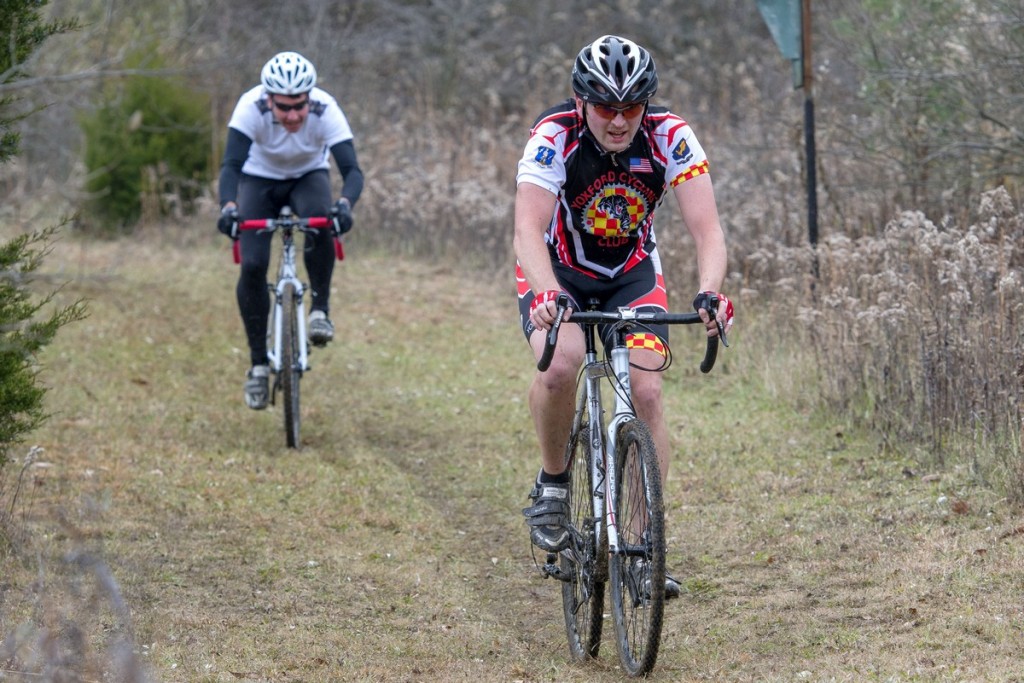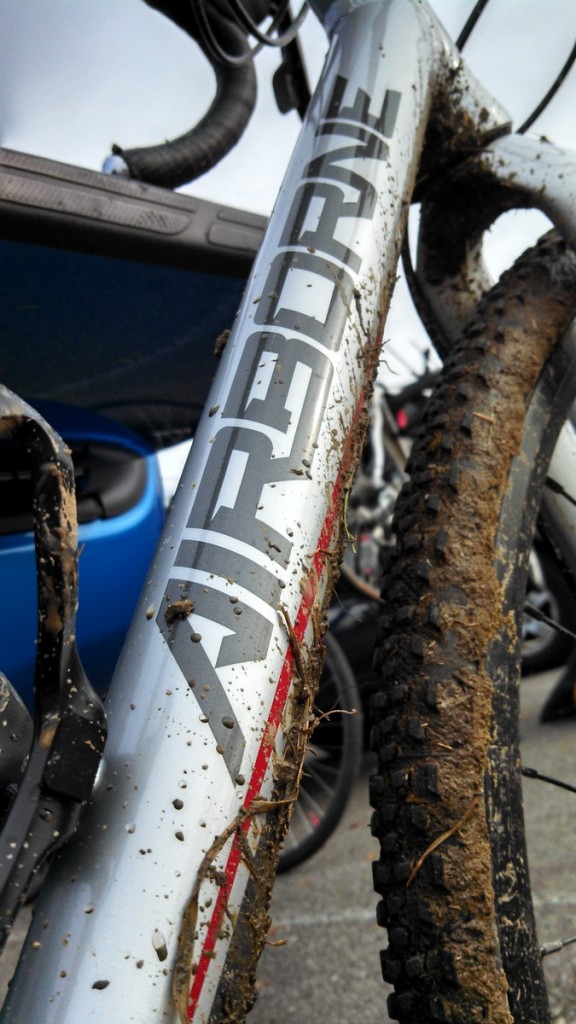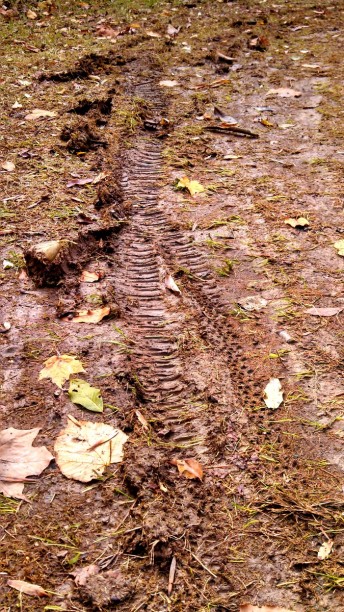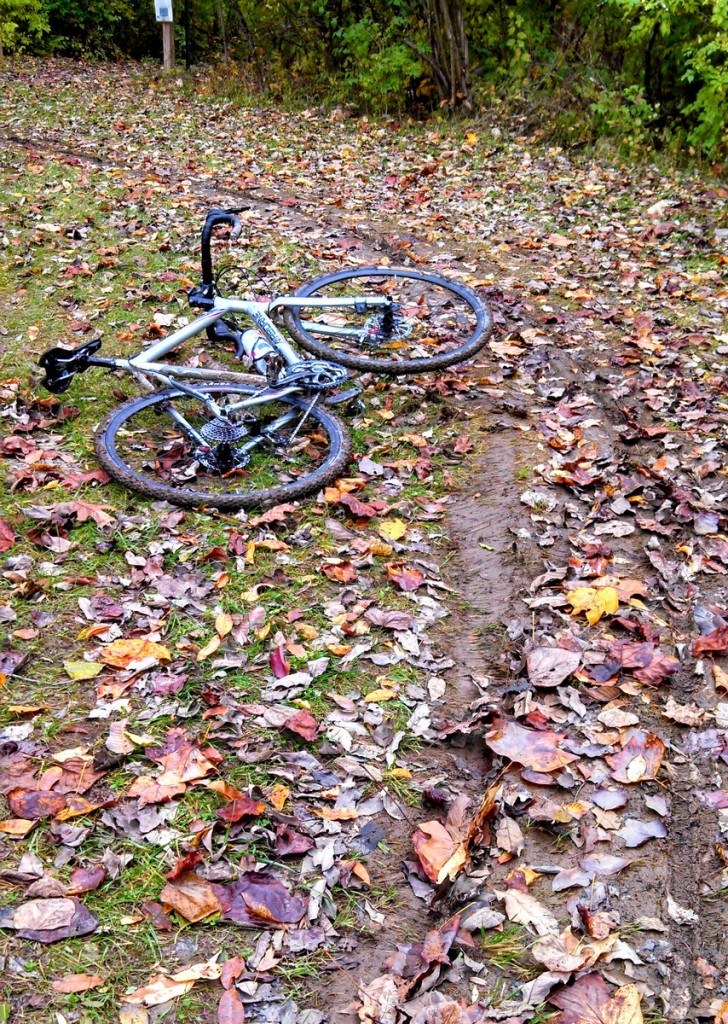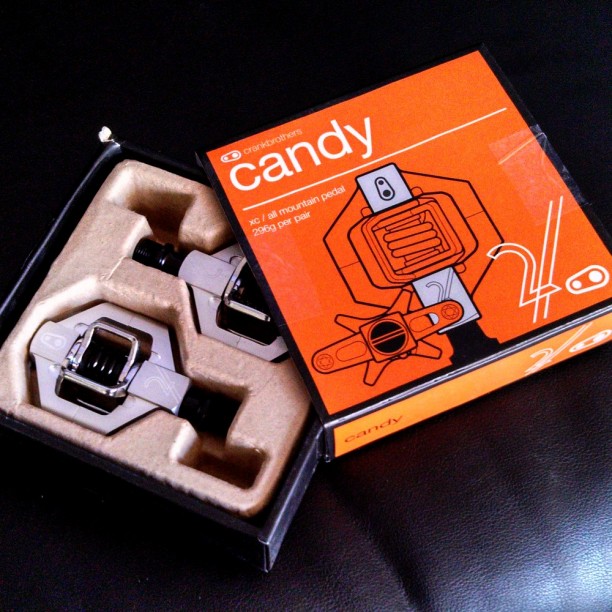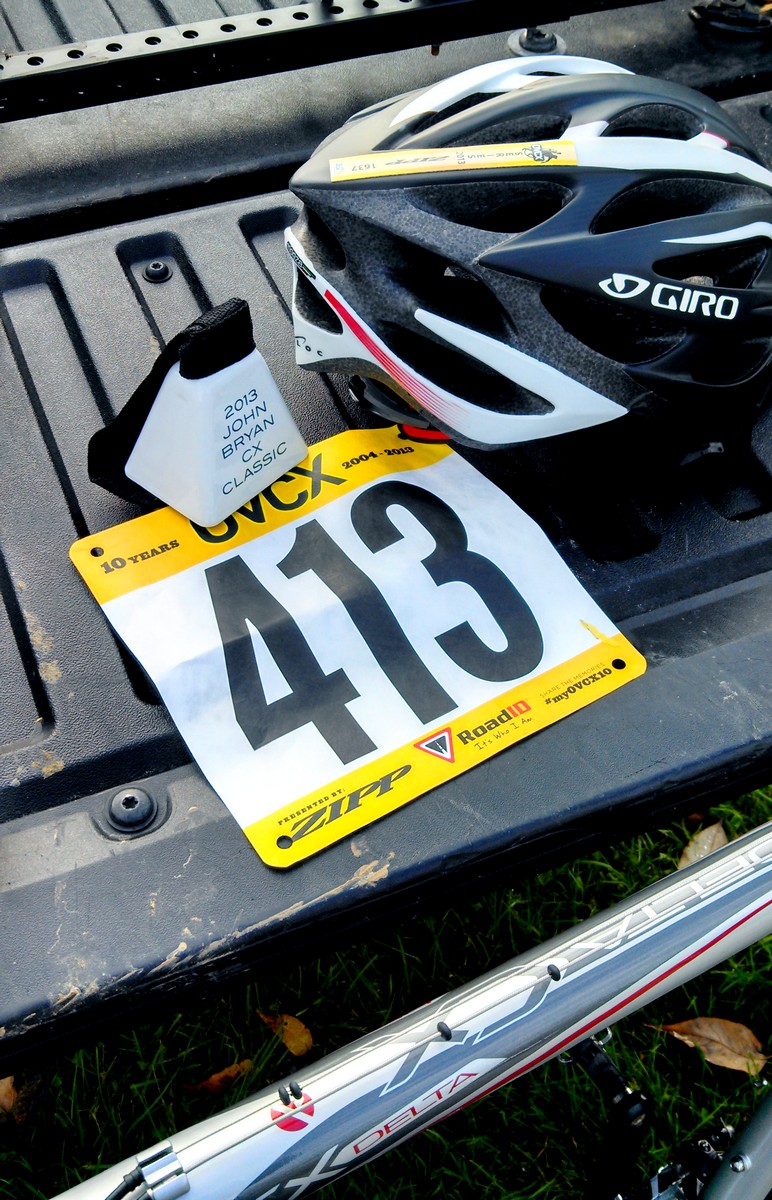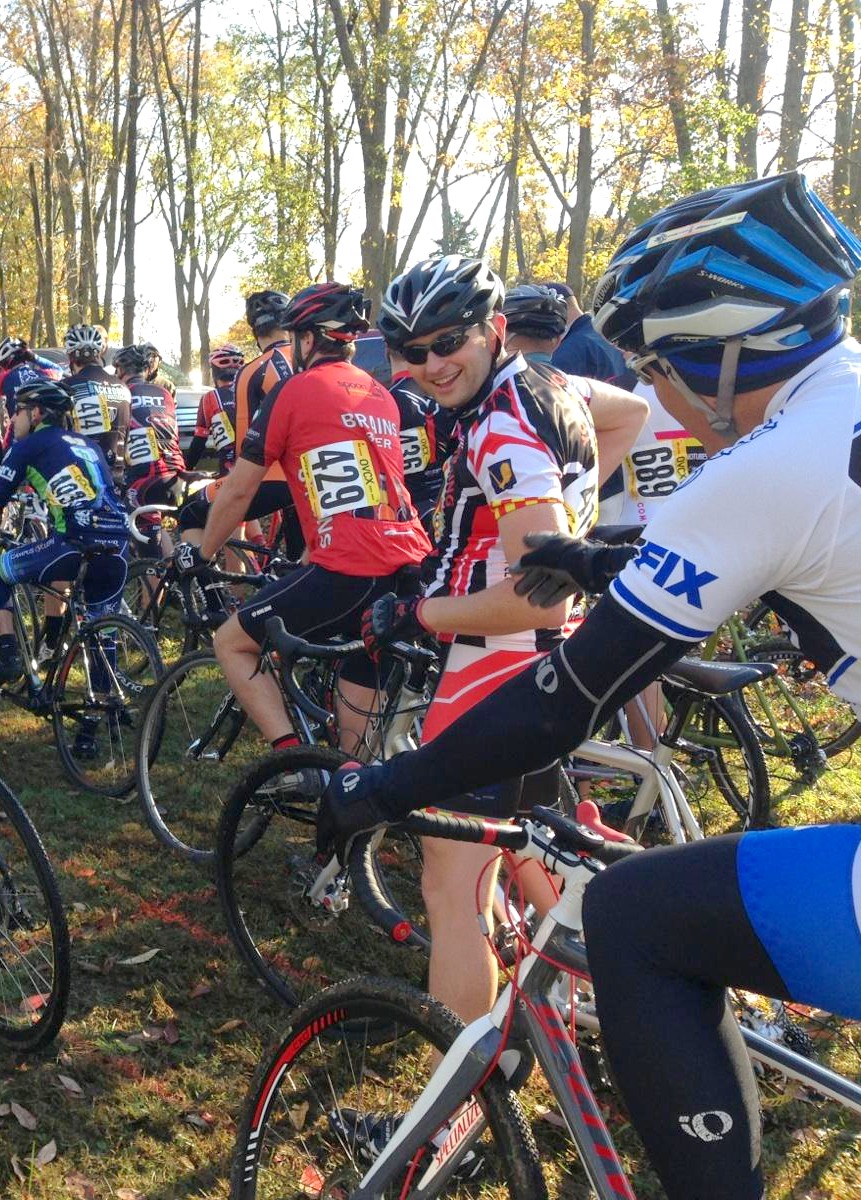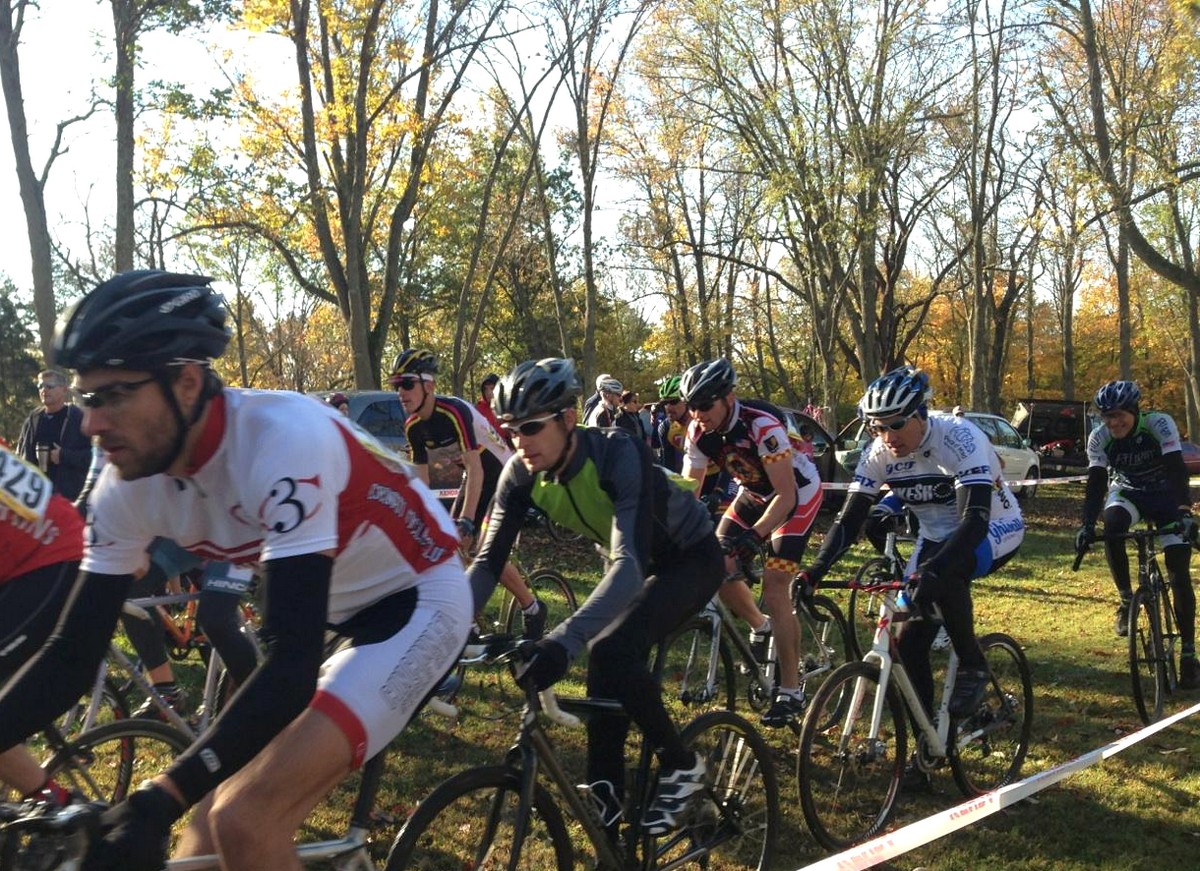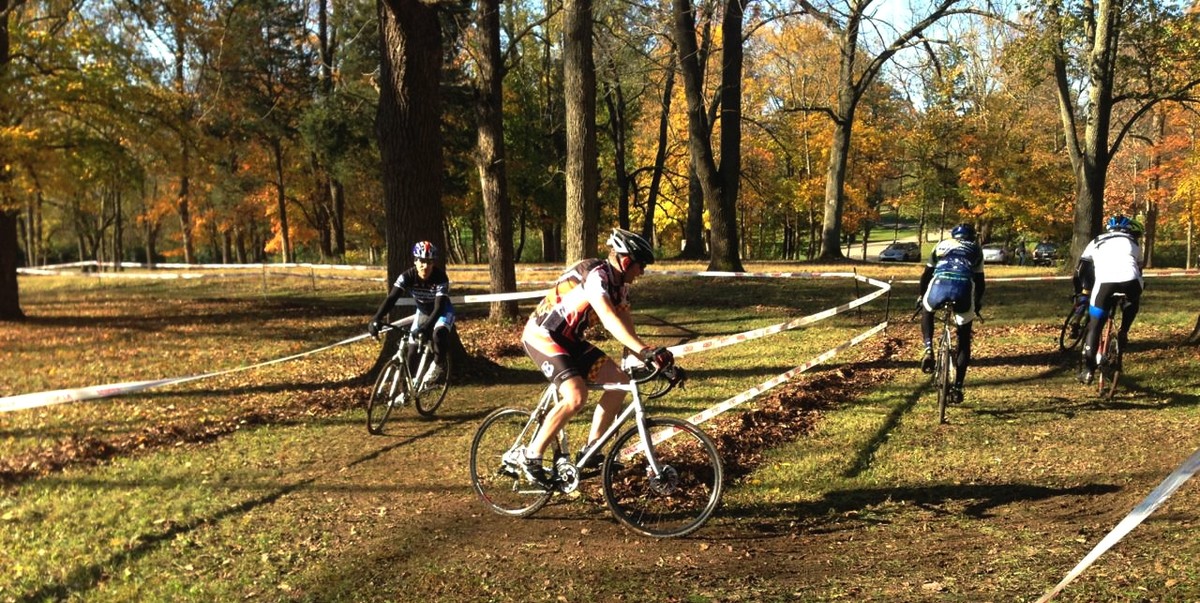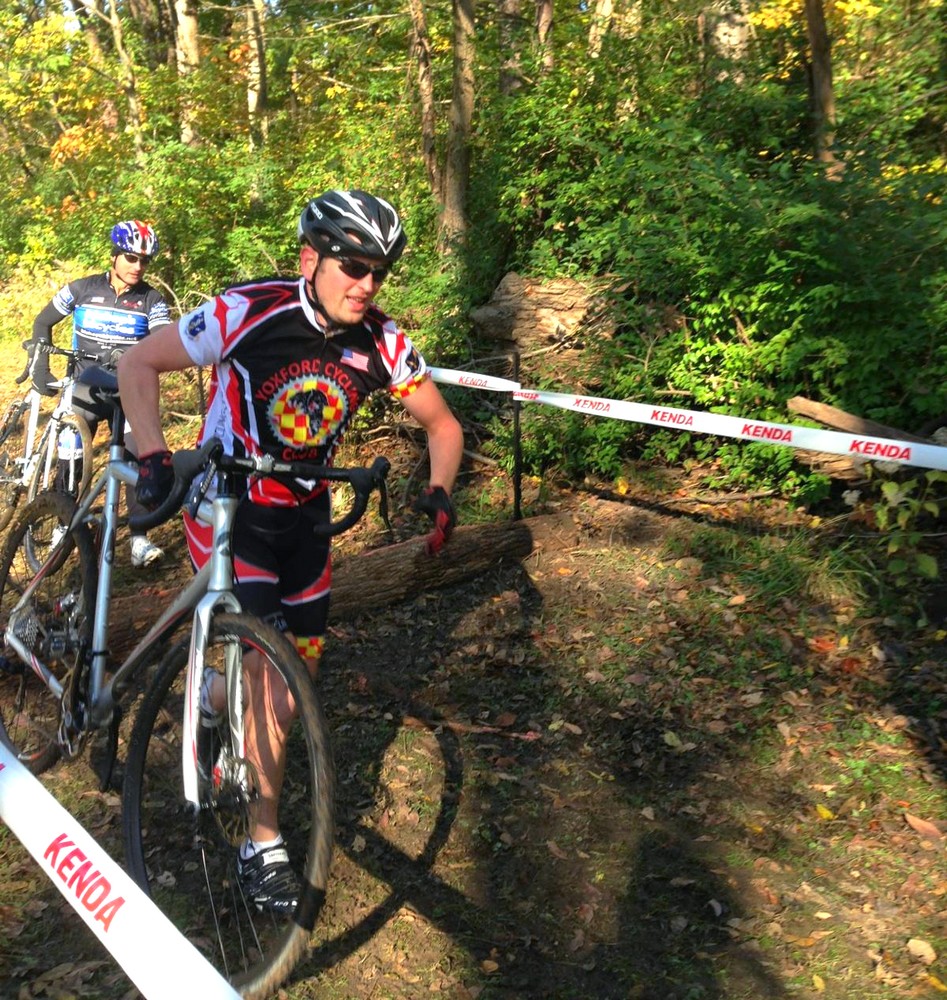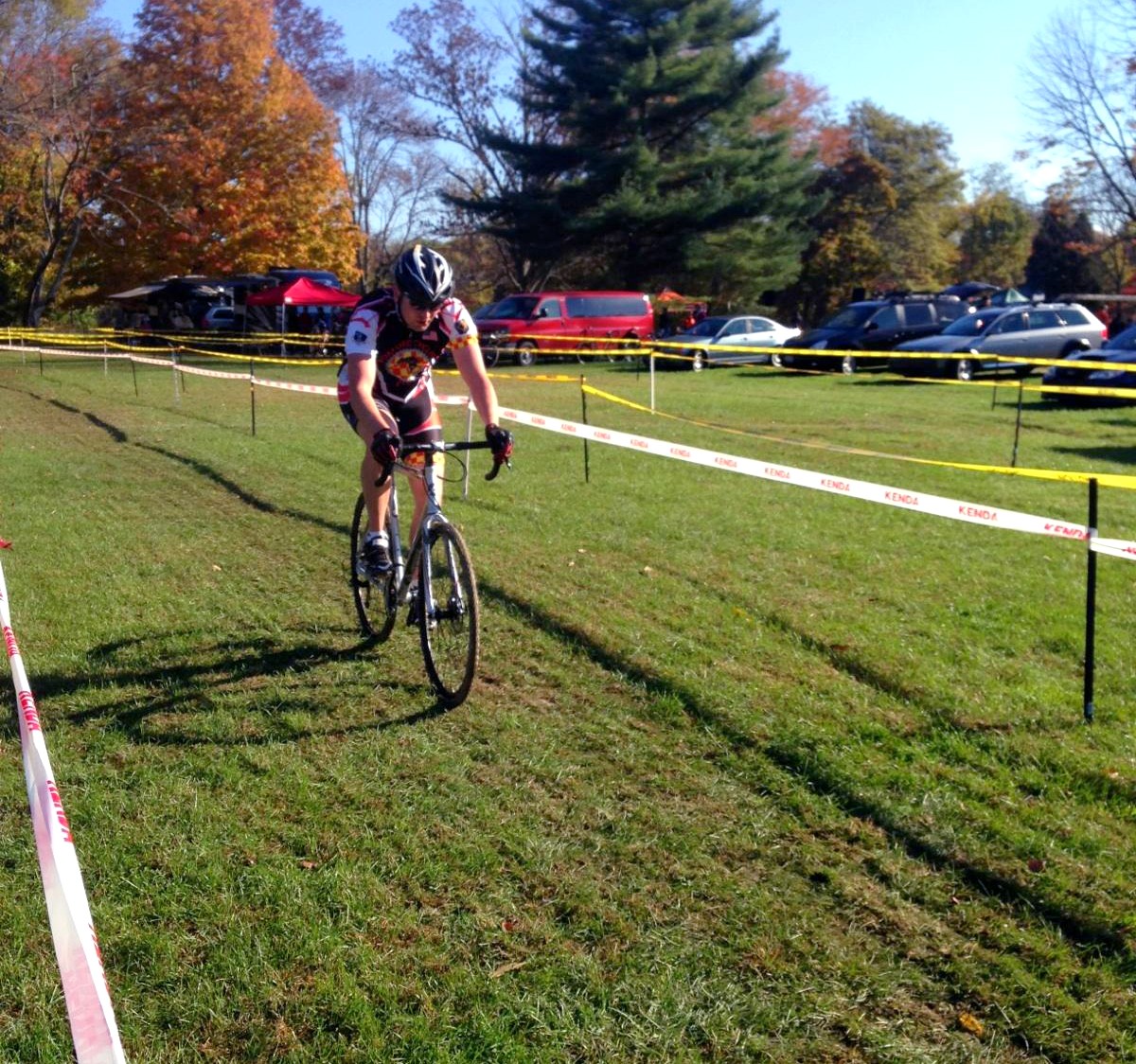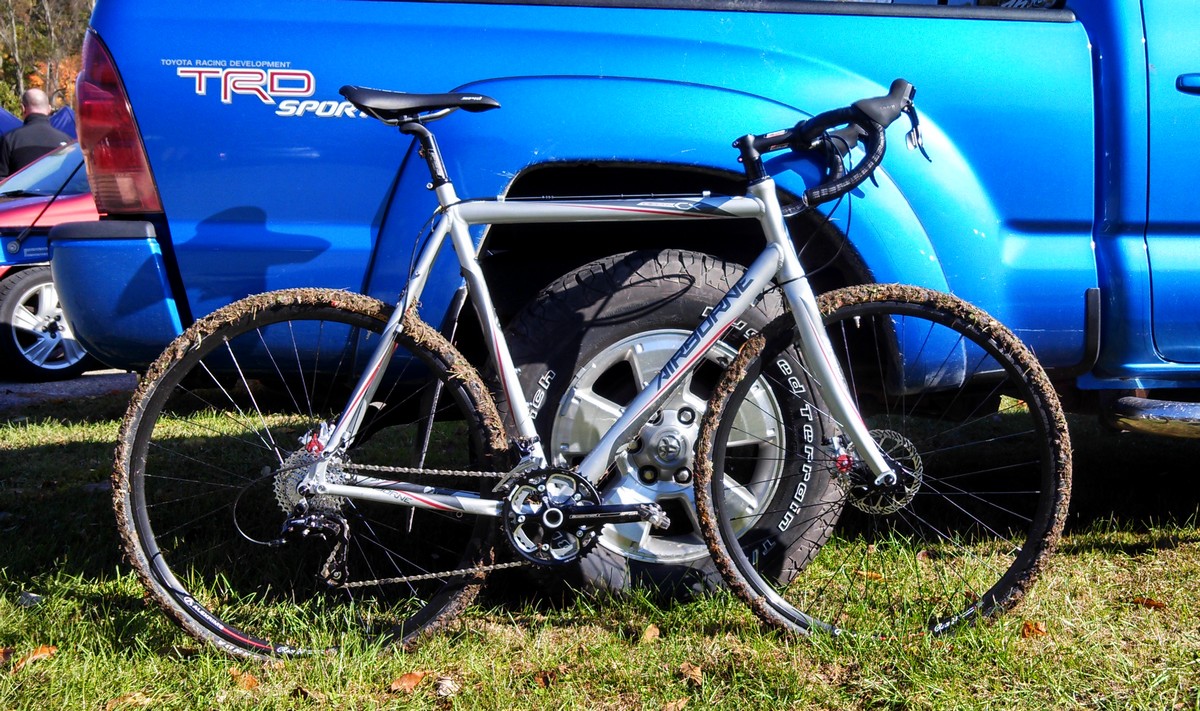The wisdom of our end-around route to avoid Combs Creek Road was soon called into question by a surprising amount of elevation change, and what seemed like an endless number of miles. In fact, our grand plan had added some 12 miles to our total, and they weren’t anywhere near as easy or swift to traverse as we had hoped. By the time we had climbed the mile-long, rutted doubletrack to the cemetery at Elkinsville, we were all ready to give our initial plan a harder look.
Even after the length of our excursion was clear, I was hesitant to deviate from it. The only other way South, where the remainder of our checkpoints lay, was on the dreaded Road-That-Sometimes-Isn’t. Jason’s condition had continued to degrade, and he was unable to make more than about 12 miles an hour, even on the flats. We had a choice to make, and neither option was good. Either we headed back the way we came, around half the county to avoid the mud, and risk grinding Jason’s legs to a dead stop, or we took on Combs Creek, and hoped that the hike wouldn’t blow them out entirely. Oh, and that my cyclocross bike would be up to the task of singletrack through a swamp.
In the end, we decided that miles were more daunting than the mud. We would take Combs Creek Road. That crusher of spirits, that destroyer of dreams, that haunt of the souls of men; that was the road we chose.
I didn’t have a great feeling about it.
As it turned out, it wasn’t so bad as the nightmares of last season’s event had persuaded us it would be. The colder temperatures of this winter had left a portion of the water still frozen under the mud, so it wasn’t as deep, and the standing water wasn’t as high. Even the sections that were impassable by bike were welcome in that they provided a change of pace. Being off the bike for a bit and walking, even if it was trudging through the mud, allowed our legs to relax a bit.
We spent the next two miles riding when we could, walking when we couldn’t, and setting our jaws, as men do against difficult tasks. The members of the fairer sex we encountered on Combs were handling the challenge with characteristic grace, smiling and encouraging each other with compliments and jokes. We grunted and panted up the hills, trying to smile at their greetings, but mostly wondering how they could be so damn cheerful in a time and place such as this.
What did put a smile on my face was the performance of my humble little ‘cross bike. Despite being placed in conditions never imagined by its designers, it did everything I asked of it, and then some. For one stretch, behind a couple fat bikes whose 4-inch tires were tailor-made for the conditions, I actually found myself gaining on them!
Slowly, the mud bog gave way to creek crossings, then jeep tracks, and finally the gate that closes the route to vehicular traffic came into view. We had made it! We conquered Combs Creek Road! Or at least I thought we did, because when I turned around, I couldn’t seem to find Jason. A few minutes later he emerged, looking very haggard indeed, but with the relief of knowing that what we expected to be the worst was over.
Although we had cut significant mileage from our overall route by taking Combs, there was still quite a way to go to reach our final two mandatory checkpoints. It would be another eight miles to reach Hanner, with a brief stop along the way at Cornett for a time bonus that didn’t seem to matter any more.
Jason was suffering, there was no other word for it. I knew by this point that it wasn’t a matter of his conditioning, but that something else had gone terribly wrong, but he was determined to continue on, and so that’s what we did. Adding to the misery of his still-building fever was the fact that he was starting to have serious leg cramps, and had run out of water. I gave him one of my bottles of electrolytes, and he cashed it immediately. We hadn’t seen a SAG wagon for hours, and if we didn’t see one soon, I’d have to give him my hydration pack as well.
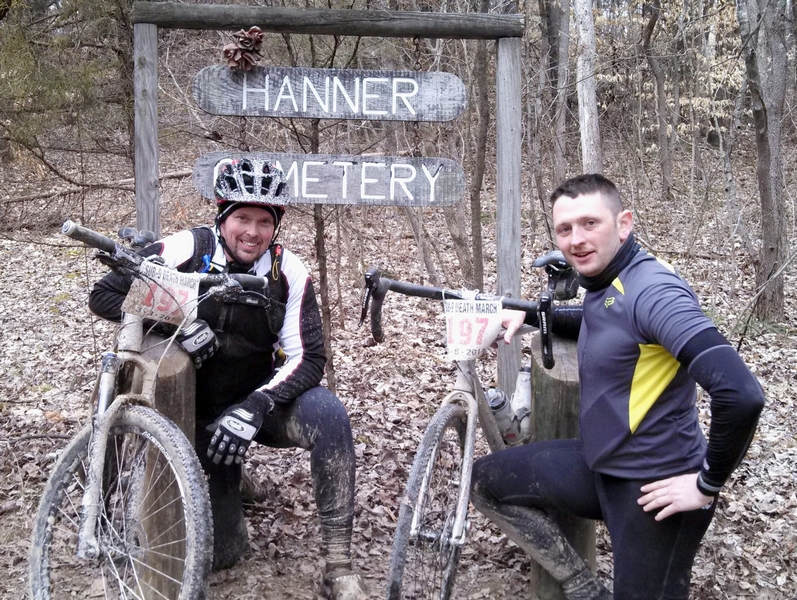
Jason’s smile is only because he finally got some more water. Four mandatory checkpoints down, one to go…
It took us every bit of an hour to get to Hanner Cemetery, where we finally ran into the SAG wagon. I refilled my bottles, and Jason replenished his CamelBak, and took in a little food. I felt terrible for him, but there was nothing I could do. I thought of swapping bikes, but figured that my bike’s more aggressive gearing would negate the weight advantage, especially as we were again into hilly territory. The cheery afternoon light had given way to a gloomy early evening, and I began to feel as if, for Jason and I alike, this just needed to be over. We had been out for a long, long time, and I couldn’t yet say how long we had to go. I did know that we’d stopped having fun some miles ago.
We turned right onto State Route 58, and I hoped that, it being a main road, the terrain would remain relatively flat. We turned into a slight wind, so I got in front, set my speed at a pace I thought Jason could maintain, and tried to give him a tow. A hundred yards later, I glanced over my shoulder, and he had dropped off already. I circled back and tried again, sitting tall in the saddle to block as much wind as I could, and setting a speed a couple clicks slower. Same result.
There was no pulling him. He was so overcome with sickness at this point that he bordered on delirium. I filed in behind him and offered what encouragement I could, counting down the miles to our next turn and reminiscing aloud about the events of last year. Anything to take his mind off his present misery.
Then the road did something cruel. What had been a false flat became steeper, until it was a legitimate climb. It rose nearly 300 feet by the time we turned, and most of that in the last half mile. My gearing wouldn’t allow me to stay with Jason without bogging, so I pulled ahead, opting instead to stop periodically and wait for him.
For me, this became the enduring image of the race. Despite how he was feeling, despite the miles and the mud and his cramping legs, Jason never quit. He clicked down to his granny gear and churned away at the pedals, dieseling up the hill with all the grim determination of a prize fighter in the tenth round. As much as I pitied his condition, I admired his resolve to finish even more, given his obvious and legitimate reasons to call it a day.
Our final checkpoint was Hickory Grove Church, situated at the top of an eponymous, winding ridge line. The road that took us there stayed at the top of that ridge, which meant that we had already accomplished the final big climb of the day. But there were plenty of little rollers along the ridge road, and each one became a mountain to my ailing teammate. We both began to wonder if we’d make it to the finish before the 6 pm time cutoff.
The twisting nature of the gravel road to the church deprived us of the obvious landmarks and lines of sight which make judging progress easy. I tried to break the remaining distance to the church into manageable segments for Jason, fearing all the while that my “just around one more curve” promises would become demoralizing if I was wrong. At last, the church came into view, and I feigned exuberance and sped ahead, hoping he would catch some of it and be able to forget his agony for a few moments.
It didn’t work. He rolled to a stop by the sign, and I could tell from his face that it was all he could do to get off the bike. We’d been out for so long that my phone battery was nearly dead, but I managed to snap our last two required photos before it did.
The good news was that this was our last checkpoint. The better news was that it would be nearly all downhill from there to the finish, and that meant we might just make it in time. We’d only have about 6 more miles to cover, and then it would all be over, and it would be time for beer, a hot shower, and food, and a warm bed!
At least, it would’ve been only six miles, if I hadn’t chosen that very moment to make my only navigational error of the day, and miss the turn onto McPike Branch Road. My miscue sent us zinging down the ridge on the South side instead of the West, adding two miles to our total when we could least afford it. As we neared the bottom, I began to suspect my error, but the lack of road signs and a dead phone battery meant I couldn’t quite be sure. We turned right when the road ended, and I glumly hoped that my gut feeling was wrong, and that we had taken the correct road. We hadn’t.
Jason was crestfallen, and I felt like I had let the air out of his tires, stolen his candy bar and kicked his puppy all at the same time. There was nothing to do for it now, only to pedal out the remaining four and a half miles to the finish. It took us half an hour. The county road dumped us out onto State Route 446 again. A slight rise was ahead, not more than 50 feet of elevation before our final turn, but it might as well have been Alpe d’Huez for Jason. He was so exhausted he couldn’t even look up, and so he just kept turning the cranks, watching his front tire eat up pavement, until he caught up to me at the top.
From there, it really was all down hill, and we coasted across the bridge to the finish, me standing on the pedals to charge the final few yards, and Jason nearly collapsing beneath the pats on the back from our waiting teammates. To the casual onlooker, it may have appeared an anticlimactic finish for a race. But those who have survived the Death March, and anyone who saw Jason’s condition knows that there should have been a brass band for him at the line. He was a soldier that day, and he earned his beer, even if he was in no condition to drink it afterward.
Finishing the Death March last year taught me about how far my body could be pushed. It taught me how to overcome physical pain with sheer determination. This year, it taught me that trying to avoid challenges sometimes results in bigger challenges. It taught me that “the right tool for the job” is sometimes overrated. And it taught me that holding back to help a friend make it home is just as rewarding as pounding through on your own. Jason’s endurance through suffering to get to the finish, both for his own conquest and to help me get the result I missed last year, will not soon be forgotten.
What trials, tricks and turmoil will the Death March bring us next year? I’m already making plans to find out.

